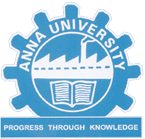 ANNA UNIVERSITY CHENNAI:: CHENNAI 600 025
ANNA UNIVERSITY CHENNAI:: CHENNAI 600 025
CURRICULUM 2004
B.TECH. INFORMATION TECHNOLOGY
IT1008 SOFTWARE TESTING 3 0 0 100
AIM
To make students understand the principles of software testing
OBJECTIVES
• To explain the basics of software testing
• To highlight the strategies for software testing
• To stress the need and conduct of testing levels
• To identify the issues in testing management
• To bring out the ways and means of controlling and monitoring testing activity
UNIT I INTRODUCTION 8
Testing as an Engineering Activity, Role of Process in Software Quality, Testing as a Process, Basic Definitions, Software Testing Principles, The Tester’s Role in a Software Development Organization, Origins of Defects, Defect Classes, The Defect Repository and Test Design, Defect Examples, Developer/Tester Support for Developing a Defect Repository
UNIT II TEST CASE DESIGN 11
Introduction to Testing Design Strategies, The Smarter Tester, Test Case Design Strategies, Using Black Box Approach to Test Case Design, Random Testing, Equivalence Class Partitioning, Boundary Value Analysis, Other Black-box Test Design Approaches, Black-box testing and COTS, Using White-Box Approach to Test design, Test Adequacy Criteria, Coverage and Control Flow Graphs, Covering Code Logic, Paths:Their Role in White-box Based Test Design, Additional White Box Test Design Approaches, Evaluating Test Adequacy Criteria
UNIT III LEVELS OF TESTING 9
The Need for Levels of Testing, Unit Test, Unit Test Planning, Designing the Unit Tests. The Class as a Testable Unit, The Test Harness, Running the Unit tests and Recording results, Integration tests, Designing Integration Tests, Integration Test Planning, System Test – The Different Types, Regression Testing, Alpha, Beta and Acceptance Tests
UNIT IV TEST MANAGEMENT 9
Introductory Concepts, Testing and Debugging Goals and Policies, Test Planning, Test Plan Components, Test Plan Attachments, Locating Test Items, Reporting Test Results, The role of three groups in Test Planning and Policy Development, Process and the Engineering Disciplines, Introducing the test specialist, Skills needed by a test specialist, Building a Testing Group
UNIT V CONTROLLING AND MONITORING 8
Defining Terms, Measurements and Milestones for Controlling and Monitoring, Status Meetings, Reports and Control Issues, Criteria for Test Completion, SCM, Types of reviews, Developing a review program, Components of Review Plans, Reporting review results
TOTAL : 45
TEXT BOOK
1. Ilene Burnstein, “Practical Software Testing”, Springer International Edition, Chennai, 2003
REFERENCES
1. Edward Kit, “Software Testing in the Real World – Improving the Process”, Pearson Education, New Delhi, 1995
2. Elfriede Dustin, “Effective Software Testing”, Pearson Education, New Delhi, 2003
3. Renu Rajani and Pradeep Oak, “Software Testing – Effective Methods, Tools and Techniques”, Tata McGraw-Hill, New Delhi, 2003

0 comments:
Post a Comment